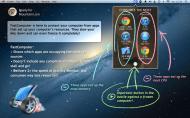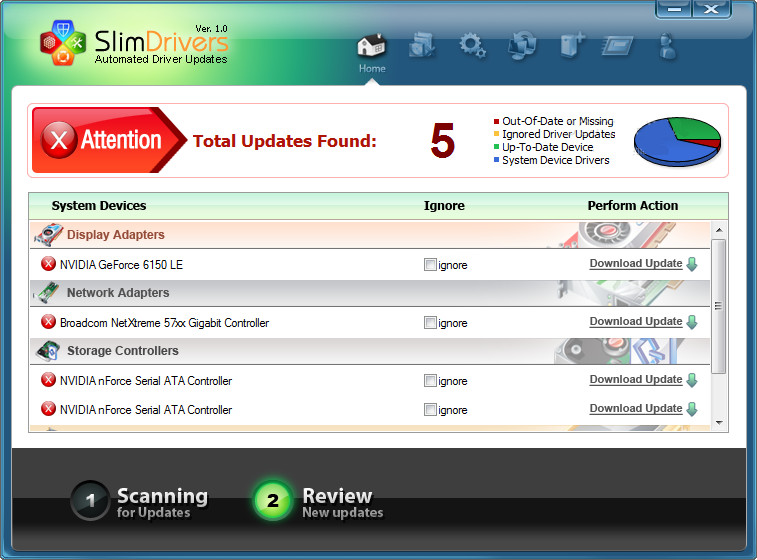For most of us, a computer probably seems fast enough if it's able to run 'LEGO Lord of the Rings' or a YouTube video of an English bulldog on a skateboard without slowing to a crawl. But for scientists who need to work on really complicated problems, the mere 158 billion calculations per second that a PC with an i7 processor can perform isn't nearly enough [sources: Peckham, ORNL, Kolawole].
Author's Note: What is the world's fastest supercomputer used for? I grew up in the 1960s, back when a computer was something that took up an entire room, and data was stored on punch cards that carried the printed warning 'do not fold, spindle or mutilate.' Dell - Inspiron 17.3' 7000 2-in-1 Touch-Screen Laptop - Intel Core i7 - 16GB Memory - GeForce MX250 - 512GB SSD + 32GB Optane - Silver Model: I7791-7452SLV-PUS SKU: 6372667.
That's why researchers are so excited about the Tennessee-based Oak Ridge National Laboratory (ORNL)'s new toy, the Cray Titan supercomputer. When it was unveiled in October 2012, the Titan claimed the title of world's fastest computer, which had been held by the IBM Sequoia Blue Gene/Q machine at the Lawrence Livermore National Laboratory in California for just six months [sources: Burt, Johnston].
Can minecraft work on a mac. Advertisement
Advertisement Mathematica 11 0 0 download free.
How fast is the Titan? Its theoretical top speed is 27 petaflops, which doesn't sound that impressive unless you know that it means 27,000 trillion calculations per second [source: ORNL]. That's hundreds of thousands times faster than your top-of-the-line PC. Unlike your PC, though, Titan won't fit on a desktop; it occupies a space the size of a basketball court [source: Kolawole]. Affinity photo free trial limitations.
Titan's incredible speed makes it a fantastic tool for tackling really complicated problems that involve gigantic amounts of data. Researchers plan to use it to run detailed simulations of the Earth's climate, which may yield ideas on how to lessen global warming. They also may use it to help design super-efficient internal combustion engines and solar panels, and to run biological simulations that will help speed the testing of new drugs. On the pure science level, Titan could help scientists simulate the breaking of the bonds that hold molecules together, giving them new insights into one of the most important processes in nature [sources: ORNL, Kolawole].
But the Titan is important not just because it's incredibly fast, but because it pioneers a new sort of supercomputer design that could spawn a generation of even speedier machines. For years, scientists have achieved higher and higher speeds simply by building machines with thousands and thousands of central processing units, or CPUs, in them, and then breaking the calculations they want to perform into smaller pieces that could be parceled out to all of those CPUs [source: ORNL]. The drawback of that approach is all those CPU chips require enormous amounts of electricity. The Titan, however, pairs each of its 18,688 CPUs with a graphic processing unit, or GPU — the sort of chip used in hot-rod gaming PCs — to accelerate the computations. GPUs don't draw as much juice as CPUs, so the result is a machine that's faster than its predecessors but also a lot more energy efficient [sources: ORNL, Kolawole].
Researchers see the Titan as blazing the way toward exascale-class computers — that is, machines a thousand or more times as fast as the most powerful supercomputers today [sources: Kolawole, Goodwin and Zacharia].

Advertisement http://crdbdyj.xtgem.com/Blog/__xtblog_entry/19218244-mac-booster-pro-8-0-2048-incl-crack#xt_blog.
Author's Note: What is the world's fastest supercomputer used for?
I grew up in the 1960s, back when a computer was something that took up an entire room, and data was stored on punch cards that carried the printed warning 'do not fold, spindle or mutilate.' And you really couldn't do that much with them, either. So it's been nothing short of amazing to watch the advance of computing power and capabilities during my lifetime.
Fast Computer 1 3 1/8
The first desktop PC that I bought in 1988 was about 10 times as fast as the onboard computer that the Apollo 11 astronauts used on the way to the Moon in 1969. And today, the iPhone that I carry in my pocket is vastly more powerful than either of them.
Related Articles
Sources
- Burt, Jeffrey. 'Cray's Titan Supercomputer Displaces IBM's Sequoia as World's Fastest.' eWeek. Nov. 11, 2012. (April 21, 2013) http://www.eweek.com/servers/crays-titan-supercomputer-displaces-ibms-sequoia-as-worlds-fastest/
- Goodwin, Bruce and Zacharia, Thomas. 'The supercomputing race.' Washington Post. June 23, 2011. (April 21, 2013) http://www.washingtonpost.com/opinions/the-supercomputing-race/2011/06/22/AGou73hH_story.html
- Johnston, Donald B. 'NNSA's Sequoia supercomputer ranked as world's fastest.' Lawrence Livermore National Laboratory. June 18, 2012. (Oct. 3, 2012) https://www.llnl.gov/news/newsreleases/2012/Jun/NR-12-06-07.html
- Kolawole, Emi. 'Oak Ridge and NVIDIA unveil Titan supercomputer.' Washington Post. Oct. 29, 2012. (April 20, 2013) http://www.washingtonpost.com/blogs/innovations/post/oak-ridge-and-nvidia-unveil-titan-supercomputer/2012/10/28/78bf2e98-2110-11e2-8448-81b1ce7d6978_blog.html
- NVIDIA. 'What is GPU Computing?' Nvidia.com. Undated. (April 20, 2013)http://www.nvidia.com/object/what-is-gpu-computing.html
- Oak Ridge National Laboratory. 'Introducing Titan.' 2012. (April 20, 2013)http://www.olcf.ornl.gov/titan/
- Oak Ridge National Laboratory. Nov. 12, 2012. (April 20, 2013). 'ORNL s supercomputer named world's most powerful' http://www.ornl.gov/info/press_releases/get_press_release.cfm?ReleaseNumber=mr20121112-00
- Peckham, Matt. 'Meet Intel's Crazy 50-Core 'Knights Corner', World's First 1 TFLOPS Processor.' Time. Nov. 17, 2011. (April 20, 2013) http://techland.time.com/2011/11/17/meet-intels-crazy-50-core-knights-corner-worlds-first-1-tflops-processor/#ixzz2R3wYzk4Q
For the first time in five years, the world's fastest computer is no longer in China. Episodes 2 2.
Yesterday (June 8), the US Department of Energy's Oak Ridge National Laboratory announced the top speeds of its Summit supercomputing machine, which nearly laps the previous record-holder, China's Sunway TaihuLight. The Summit's theoretical peak speed is 200 petaflops, or 200,000 teraflops. To put that in human terms, approximately 6.3 billion people would all have to make a calculation at the same time, every second, for an entire year, to match what Summit can do in just one second. (Another way to see it: if you want to go toe-to-toe with Summit yourself, settle in. You'll be making a calculation every single second for the next 6.3 billion years.)
Fast Computer 1 3 128
Supercomputing technology has been improving rapidly in recent years. Just over a decade ago, the world hadn't yet built a machine that could crack even a single petaflop (or 1,000 teraflops). Now, in just a year, we've gone from 125 petaflops to 200.
At eight times the speed of the US's previous fastest computer, Summit is a major advance for the country's supercomputing efforts. Starman 1 1 – point & click adventure game. The Oak Ridge team says the system, which cost $200 million to build, is the first supercomputer made bespoke for use in artificial-intelligence applications. That's important because, in many ways, AI has become the new space race, with countries all around the world investing huge amounts of money into the field. China and the US are at the front of the pack, but Russia, the UK, the EU, and Canada are all deeply invested in AI research as well.

Advertisement http://crdbdyj.xtgem.com/Blog/__xtblog_entry/19218244-mac-booster-pro-8-0-2048-incl-crack#xt_blog.
Author's Note: What is the world's fastest supercomputer used for?
I grew up in the 1960s, back when a computer was something that took up an entire room, and data was stored on punch cards that carried the printed warning 'do not fold, spindle or mutilate.' And you really couldn't do that much with them, either. So it's been nothing short of amazing to watch the advance of computing power and capabilities during my lifetime.
Fast Computer 1 3 1/8
The first desktop PC that I bought in 1988 was about 10 times as fast as the onboard computer that the Apollo 11 astronauts used on the way to the Moon in 1969. And today, the iPhone that I carry in my pocket is vastly more powerful than either of them.
Related Articles
Sources
- Burt, Jeffrey. 'Cray's Titan Supercomputer Displaces IBM's Sequoia as World's Fastest.' eWeek. Nov. 11, 2012. (April 21, 2013) http://www.eweek.com/servers/crays-titan-supercomputer-displaces-ibms-sequoia-as-worlds-fastest/
- Goodwin, Bruce and Zacharia, Thomas. 'The supercomputing race.' Washington Post. June 23, 2011. (April 21, 2013) http://www.washingtonpost.com/opinions/the-supercomputing-race/2011/06/22/AGou73hH_story.html
- Johnston, Donald B. 'NNSA's Sequoia supercomputer ranked as world's fastest.' Lawrence Livermore National Laboratory. June 18, 2012. (Oct. 3, 2012) https://www.llnl.gov/news/newsreleases/2012/Jun/NR-12-06-07.html
- Kolawole, Emi. 'Oak Ridge and NVIDIA unveil Titan supercomputer.' Washington Post. Oct. 29, 2012. (April 20, 2013) http://www.washingtonpost.com/blogs/innovations/post/oak-ridge-and-nvidia-unveil-titan-supercomputer/2012/10/28/78bf2e98-2110-11e2-8448-81b1ce7d6978_blog.html
- NVIDIA. 'What is GPU Computing?' Nvidia.com. Undated. (April 20, 2013)http://www.nvidia.com/object/what-is-gpu-computing.html
- Oak Ridge National Laboratory. 'Introducing Titan.' 2012. (April 20, 2013)http://www.olcf.ornl.gov/titan/
- Oak Ridge National Laboratory. Nov. 12, 2012. (April 20, 2013). 'ORNL s supercomputer named world's most powerful' http://www.ornl.gov/info/press_releases/get_press_release.cfm?ReleaseNumber=mr20121112-00
- Peckham, Matt. 'Meet Intel's Crazy 50-Core 'Knights Corner', World's First 1 TFLOPS Processor.' Time. Nov. 17, 2011. (April 20, 2013) http://techland.time.com/2011/11/17/meet-intels-crazy-50-core-knights-corner-worlds-first-1-tflops-processor/#ixzz2R3wYzk4Q
For the first time in five years, the world's fastest computer is no longer in China. Episodes 2 2.
Yesterday (June 8), the US Department of Energy's Oak Ridge National Laboratory announced the top speeds of its Summit supercomputing machine, which nearly laps the previous record-holder, China's Sunway TaihuLight. The Summit's theoretical peak speed is 200 petaflops, or 200,000 teraflops. To put that in human terms, approximately 6.3 billion people would all have to make a calculation at the same time, every second, for an entire year, to match what Summit can do in just one second. (Another way to see it: if you want to go toe-to-toe with Summit yourself, settle in. You'll be making a calculation every single second for the next 6.3 billion years.)
Fast Computer 1 3 128
Supercomputing technology has been improving rapidly in recent years. Just over a decade ago, the world hadn't yet built a machine that could crack even a single petaflop (or 1,000 teraflops). Now, in just a year, we've gone from 125 petaflops to 200.
At eight times the speed of the US's previous fastest computer, Summit is a major advance for the country's supercomputing efforts. Starman 1 1 – point & click adventure game. The Oak Ridge team says the system, which cost $200 million to build, is the first supercomputer made bespoke for use in artificial-intelligence applications. That's important because, in many ways, AI has become the new space race, with countries all around the world investing huge amounts of money into the field. China and the US are at the front of the pack, but Russia, the UK, the EU, and Canada are all deeply invested in AI research as well.
And despite the US now owning the world's fastest machine, China still operates more supercomputers overall.
Supercomputers have myriad uses, many of which are essential to national security and the general welfare of the public. In the US, for example, the National Oceanic and Atmospheric Administration uses supercomputers to predict climate trends and model weather patterns. The Energy Department uses them to run nuclear simulations, and to mine data to find oil and natural gas deposits. The National Security Agency and similar government bodies rely on supercomputers to crack encryption codes. These powerful machines are necessary for handling the massive datasets required advanced genomic research, one of the most promising fields in medical science.
More powerful machine learning and neural-network capabilities would advance all these fields, and, presumably, Summit will lead the way.
As impressive as Summit is, many see it as just a stepping stone to the real target: building a machine that can carry out an exaflop, which is 1,000 petaflops.
The US government is reportedly already talking to manufacturers about developing several exaflop supercomputers, and energy secretary Rick Perry said yesterday that they want to deliver the first by 2021. These efforts are largely perceived as taking place with an eye towards staying ahead of China in the supercomputing race.
